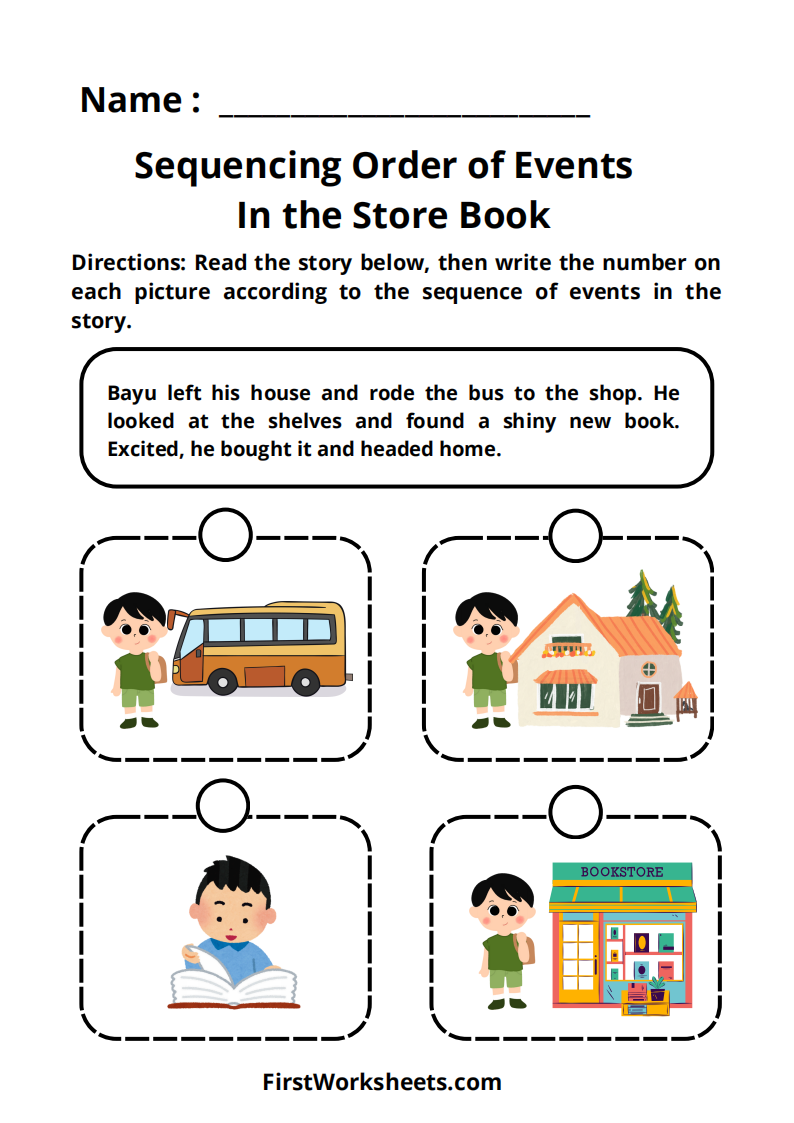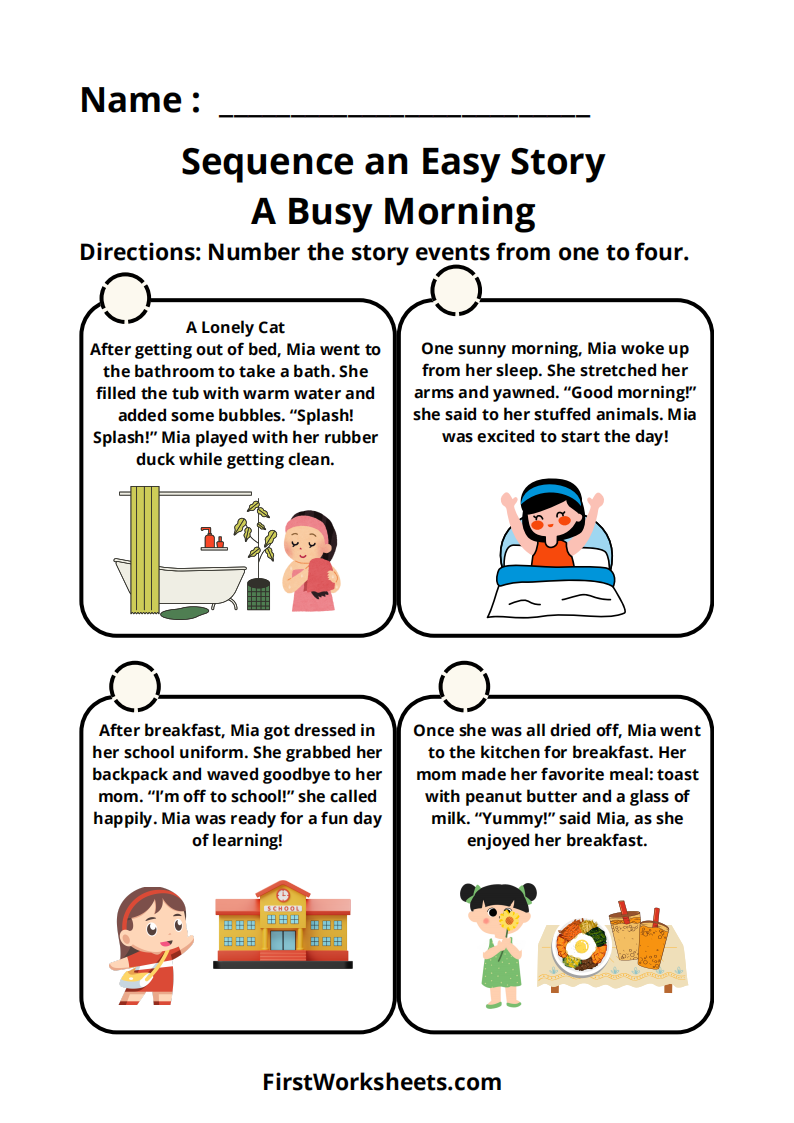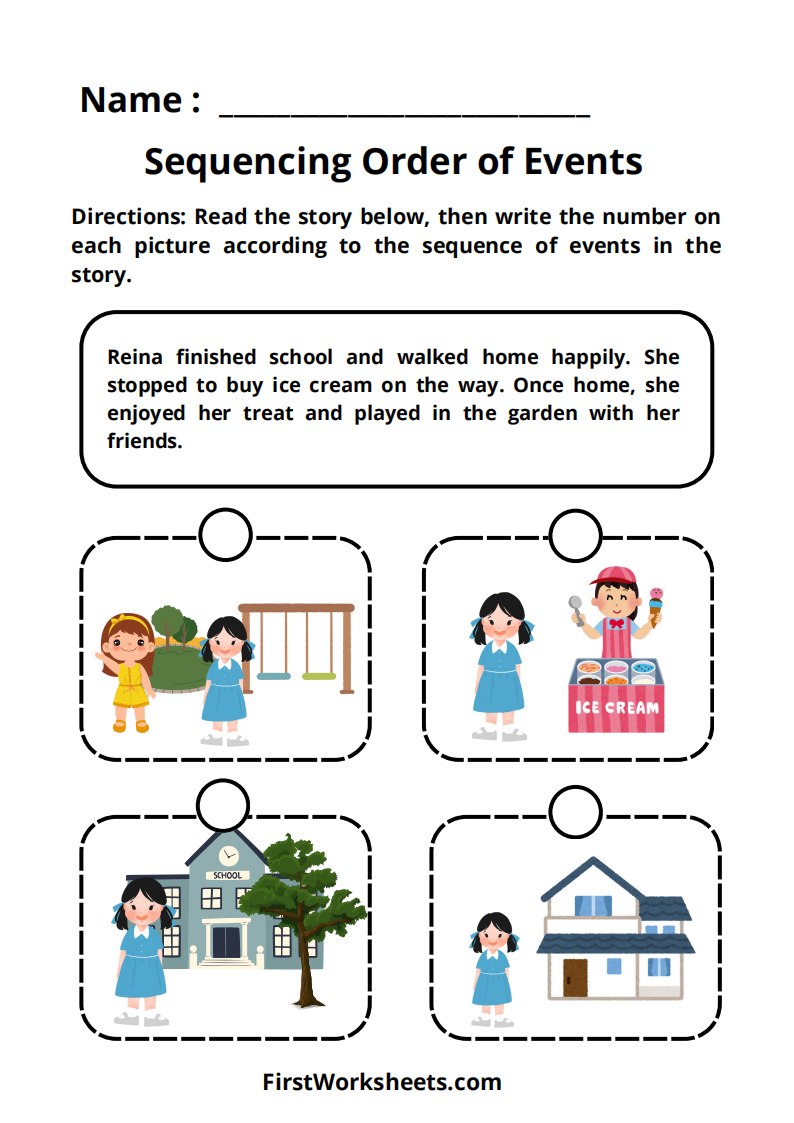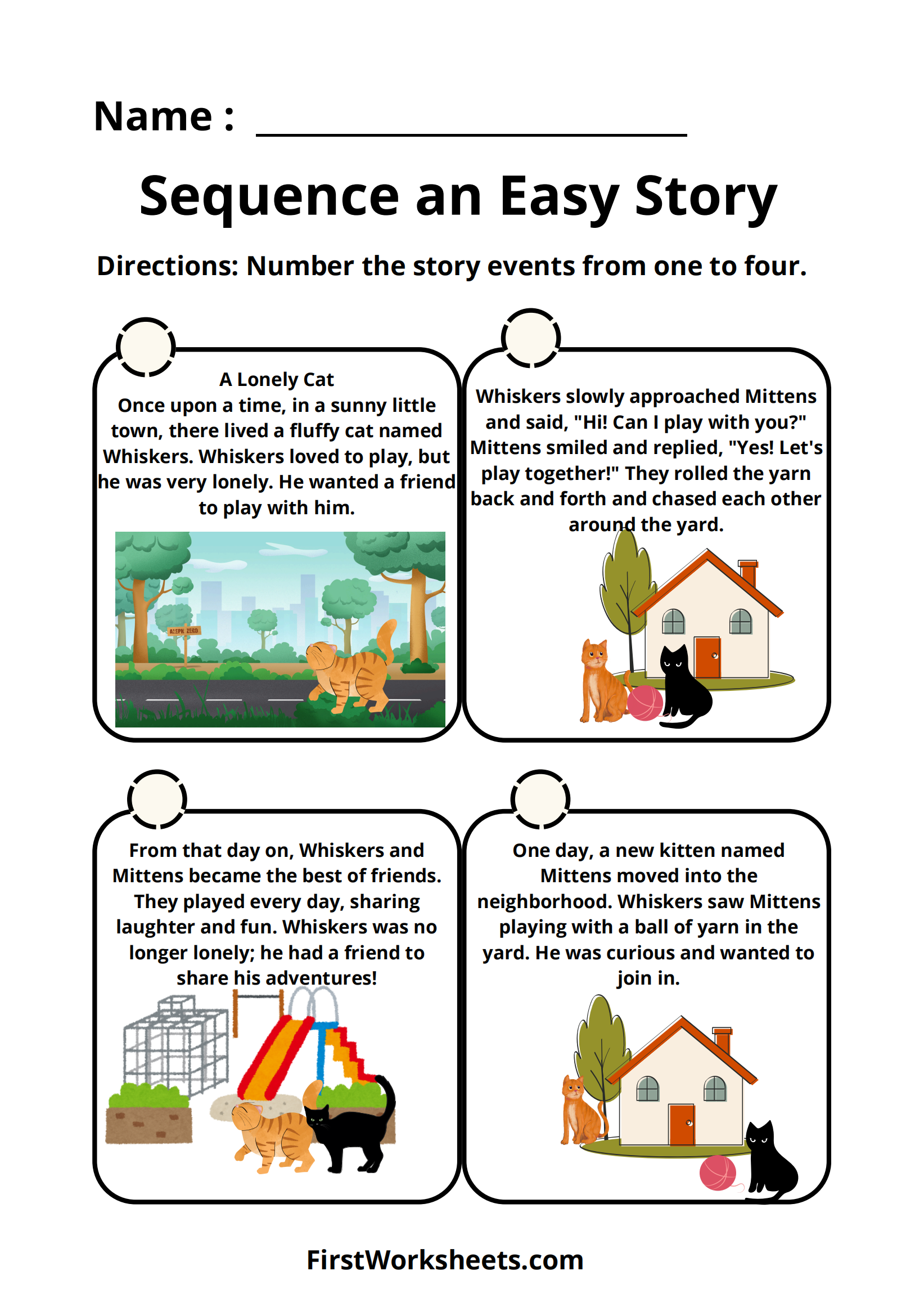Sequencing Events Worksheets
Sequencing events worksheets are designed to help young learners understand and practice the skill of arranging events in chronological order. Sequencing is a fundamental reading comprehension skill that allows children to make sense of narratives, follow instructions, and understand the logical progression of events. Here are in-depth details on the purpose, structure, and benefits of these worksheets:
Purpose of Sequencing Events Worksheets
- Developing Comprehension: Sequencing worksheets teach children to break down stories, instructions, or information into steps, making it easier to understand and recall.
- Logical Thinking: Sequencing reinforces logical thinking by teaching students how to connect parts of a story or set of instructions to create a coherent flow.
- Foundational Skill for Writing: Sequencing is essential for young writers. Knowing how to order ideas logically helps students plan and write their own stories and essays.
- Supporting Real-World Understanding: In real life, events happen in a particular order. These worksheets help students relate classroom learning to everyday situations.
Types of Sequencing Activities
- Picture Sequencing: Students are provided with images that illustrate a story or a series of actions (like brushing teeth). They are asked to arrange the pictures in the correct order, helping them visually understand sequence.
- Sentence Sequencing: Students receive several sentences describing events. They must rearrange them to tell a logical story, which helps improve their reading and comprehension skills.
- Story Sequencing: A short story is broken down into parts. Students read each part and arrange it in the correct order, developing their understanding of narrative structure.
- Fill-in-the-Blank Sequencing: For events with missing steps, students must identify the missing part of the sequence, promoting critical thinking and problem-solving.
- Cut-and-Paste Sequencing: Worksheets often include cut-and-paste activities where students physically move sections of a story into the correct order, making sequencing an interactive experience.
Benefits of Sequencing Worksheets
- Enhances Comprehension: By practicing sequencing, students develop a better understanding of the order in narratives, which is essential for reading comprehension.
- Improves Memory and Recall: Sequencing activities encourage students to remember and recall details, aiding in memory retention.
- Builds Vocabulary and Language Skills: Through sentence sequencing and story sequencing, students learn new words and ways to structure sentences.
- Develops Critical Thinking: By figuring out the correct order of events, students practice logical reasoning and problem-solving skills.
- Encourages Independence in Learning: Sequencing worksheets encourage to work independently and boost confidence as they succeed in arranging events on their own.
Sequencing events worksheets, especially for students, are an invaluable tool for building a range of cognitive, language, and critical thinking skills.





